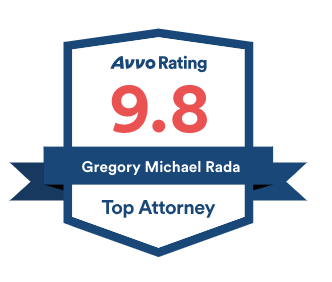How Does VA Rate PTSD and other Psychiatric Disorders?
Posted by Gregory M. Rada | June 08, 2021 | Firm News
A study conducted in the late eighties found that the lifetime prevalence of PTSD among veterans that served during the Vietnam era was 30.9% for men and 26.9% for women. A study conducted in the late nineties estimated the prevalence of PTSD among Gulf War veterans to be 10% to 12%. And a study conducted in 2014 found the prevalence among Iraq-deployed veterans to be 12.9% and among Afghanistan-deployed veterans to be 7.1%. The rates among Iraq and Afghanistan veterans could be even higher when considering the fact that PTSD can often manifest later in life which is referred to as delayed-onset PTSD.
PTSD and other psychiatric conditions can be caused by many things – combat is the first situation that everyone thinks about, but it can also be caused by any traumatic event, such as military sexual trauma (MST) or something like a car accident that occurred off duty.
To obtain VA disability compensation benefits for PTSD, you must have a current diagnosis of PTSD and must be able to prove that a traumatic stressor occurred on active duty. It’s not always necessary to prove the specific stressor because VA has relaxed the standard for combat stressors (just need to show you had service consistent with having “fear of hostile military or terrorist activity”) and MST stressors (can use circumstantial evidence to prove a MST occurred). Finally, a doctor must opine that the PTSD diagnosis was caused by the service-related stressor.
Once you receive service connection for PTSD or any other psychiatric condition, the VA will then assign a rating based on the severity of your psychiatric symptoms. When rating a mental disorder, the VA focuses on occupational impairment and social impairment – i.e., the rating is based on how your psychiatric condition impacts your ability to work and how it impacts your social and family life:
0 Percent Rating
VA assigns a 0% rating when a mental condition has been diagnosed but the symptoms “are not severe enough either to interfere with occupational and social functioning or to require continuous medication.” This means VA determined you have a psychiatric condition that essentially produces no symptoms, which is somewhat of an oxymoron because if you had no symptoms, then you probably wouldn’t have been given a diagnosis. If you’re rated 0% for a mental condition, you should contact us to see if that rating should be increased.
10 Percent Rating
VA assigns a 10% rating when your mental condition causes “occupational and social impairment due to mild or transient symptoms which decrease work efficiency and ability to perform occupational tasks only during periods of significant stress” or if your symptoms are controlled by continuous medication. This means you either have no symptoms because your medication controls them, or you have very minor symptoms that only manifest during “periods of significant stress.” Like a 0% rating, a 10% rating is also very low for a psychiatric condition and you should contact us to see if that rating should be higher.
30 Percent Rating
VA assigns a 30% rating when your psychiatric condition causes “occupational and social impairment with occasional decrease in work efficiency and intermittent periods of inability to perform occupational tasks (although generally functioning satisfactorily, with routine behavior, self-care, and conversation normal).” The key phrase here is “occasional decrease in work efficiency and intermittent periods of inability to perform occupational tasks.” This is why it is important to explain to VA examiners how your PTSD manifests at work – it’s always good to give real-life examples such as describing a recent situation where your PTSD caused an issue at work, e.g., you got in a fight with your boss or co-worker, you yelled at a customer, or you just didn’t come into work one day because you had bad anxiety. The rating schedule gives examples of symptoms that warrant a 30% rating (depressed mood, anxiety, suspiciousness, panic attacks, chronic sleep impairment, and mild memory loss), but those symptoms are just examples, and you can receive a 30% rating even if you have none of those example symptoms.
50 Percent Rating
VA assigns a 50% rating when you have “reduced reliability and productivity” due to symptoms such as flattened affect; circumstantial, circumlocutory, or stereotyped speech; panic attacks more than once a week; difficulty in understanding complex commands; impairment of short- and long-term memory (e.g., retention of only highly learned material, forgetting to complete tasks); impaired judgment; impaired abstract thinking; disturbances of motivation and mood; difficulty in establishing and maintaining effective work and social relationships.” Here, it is important for you to explain to the VA examiner how your PTSD impacts work and social life – give them real-life examples of issues at work and issues in your social functioning.
70 Percent Rating
VA assigns a 70% rating when you have “deficiencies” in “most areas” of your life, such as “work, school, family relations, judgment, thinking, or mood.” Thus, you need to explain all the shortcomings that PTSD causes throughout your life. Again, give examples of how your PTSD causes deficiency at work, or at school, and in your family/social life, judgment, thinking, and mood. The example symptoms for a 70% rating are “suicidal ideation; obsessional rituals which interfere with routine activities; speech intermittently illogical, obscure, or irrelevant; near-continuous panic or depression affecting the ability to function independently, appropriately and effectively; impaired impulse control (such as unprovoked irritability with periods of violence); spatial disorientation; neglect of personal appearance and hygiene; difficulty in adapting to stressful circumstances (including work or a work-like setting); inability to establish and maintain effective relationships.”
Suicidal ideation is an especially important symptom because the U.S. Court of Appeals for Veterans Claims, in Bankhead v. Shulkin, 29 Vet. App. 10 (2017), held that suicidal ideation alone can support a 70% rating. And just as importantly, the Court held that even minor suicidal ideation counts as suicidal ideation for purposes of a 70% rating because the Court recognized the high prevalence of suicide among veterans. This means that even if you have fleeting thoughts of suicide or death without intent, then you can qualify for a 70% rating.
100 Percent Rating
Finally, VA assigns a 100% rating when your PTSD causes “total occupational and social impairment.” This means your PTSD makes you unable to work and unable to maintain any type of social relationships. Example symptoms are “gross impairment in thought processes or communication; persistent delusions or hallucinations; grossly inappropriate behavior; persistent danger of hurting self or others; intermittent inability to perform activities of daily living (including maintenance of minimal personal hygiene); disorientation to time or place; memory loss for names of close relatives, own occupation, or own name.” The 100% rating is reserved for veterans with the most severe psychiatric symptoms.
Summary
In my experience, the VA often underrates veterans’ psychiatric conditions so it’s important to consult with a VA disability attorney to make sure you are receiving the appropriate rating for your PTSD. Additionally, it’s important to note that your rating should be based on the overall impairment – not how you were doing on the day of the VA examination. VA regulations recognize that psychiatric symptoms wax and wane and they are required by regulation to assign a rating based on all the evidence, including your worst days.
For a free consultation with an experienced VA disability lawyer, contact After Service LLC. We do not charge upfront legal fees in these matters.
FAQs
What is PTSD?
PTSD is a psychiatric condition that manifests when a person experiences or witnesses a traumatic event, such as combat, a serious accident, military sexual trauma (MST), or anything involving the potential for death or serious injury.
How is PTSD Treated?
The VA often recommends counseling and medication to help control symptoms. Many veterans turn to alcohol or marijuana to take the edge off symptoms and to help control nightmares. Recently, studies with MDMA (ecstasy) have shown promise.
What is a TDIU?
A “total disability rating based on individual unemployability” allows VA to pay a veteran at the 100% payment rate when their combined rating is less than 100% and when their service-connected disability or disabilities prevent them from maintaining substantially gainful employment. Oftentimes, a veteran will have a 70% rating for PTSD but can’t qualify for a 100% rating because although they have “total occupational impairment,” they don’t have “total social impairment.” In such a case, the veteran should apply for a TDIU because their PTSD prevents them from working.







